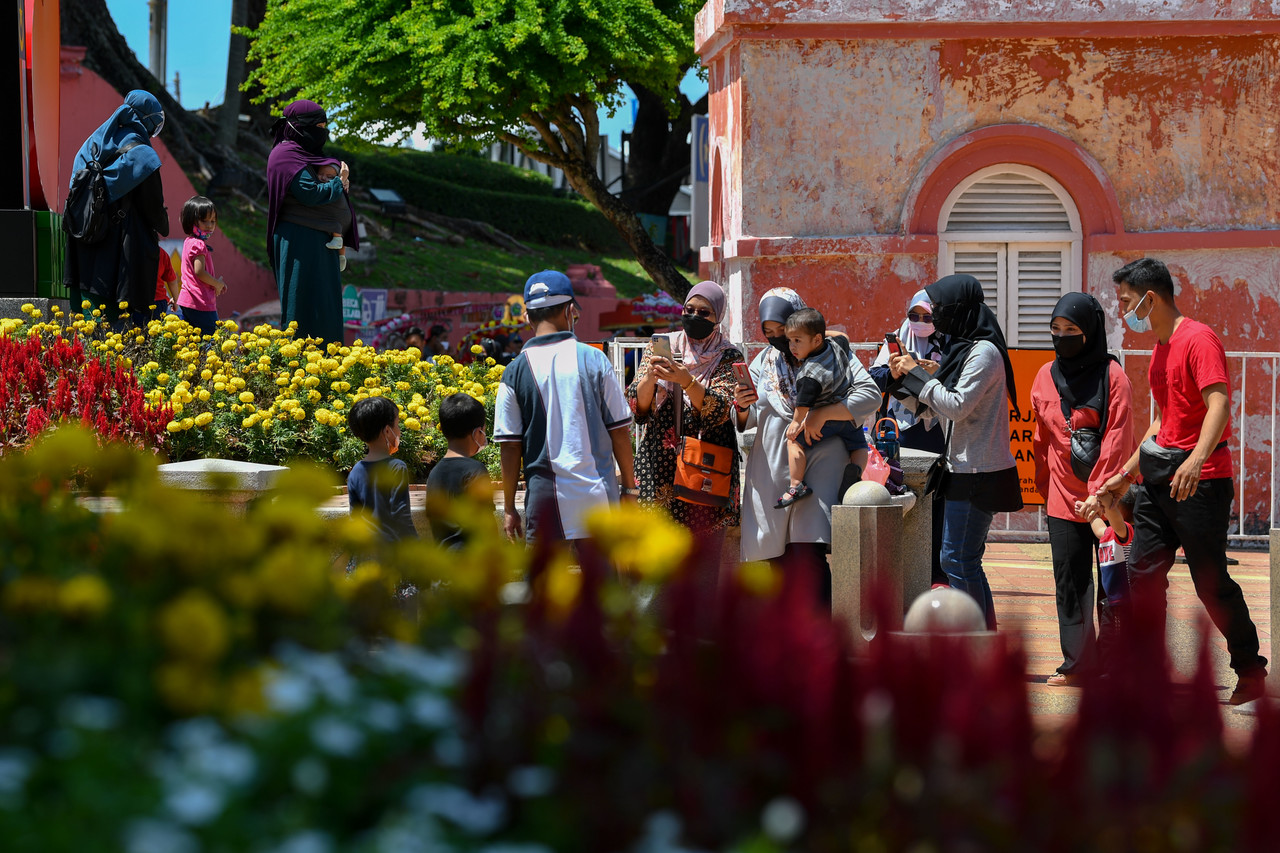SINCE 2008, the Department of Statistics Malaysia (DOSM) has been conducting surveys on domestic tourism and publishing a report for the previous year at the end of every June. Right on cue, the 2021 Domestic Tourism Survey was posted at its website on June 29 for public scrutiny.
As expected, all the key performance indicators (KPI) continued to drop as travel restrictions were more severe last year than the previous year.
The total number of domestic visitors dropped by 49.9% from 131.7 million in 2020 to 66 million in 2021. In 2020, the drop was 44.9% from 239.1 million in 2019. To the uninitiated, these visitor figures appear too high to be true but such doubts will be erased with a clear understanding of tourism terms.
For starters, domestic visitors include tourists that stayed overnight away from home and excursionists that went for day trips and returned home the same day. Before the pandemic, about one-third of all visitors are tourists and this percentage is further reduced by travel restrictions.
Visitors include both interstate and intrastate travel. For example, Sarawak is among the top three states with the biggest number of domestic visitors, and almost all are from within the state. Those from Klang travelling to Kuala Lumpur for shopping are also counted as visitors.
Last year, 24.2% of all domestic visitors cited visiting relatives and friends as the main purpose of their travel compared to 32% in 2020 and 42.3% in 2019. The other main purposes in 2021 were for shopping 36.4%, holiday 15.5%, medical 10.3% and incentive travel and others 6.6%.
For 2020, shopping was again top at 42.3%, visiting relatives and friends 32%, holiday 16.9%, medical 4.2% and entertainment/event/sports 1.7%. In 2019, visiting relatives and friends was top at 42.3%, shopping 35.4%, holiday 9%, medical 4% and entertainment/event/sport 4%.
In 2021, total number of trips taken by 66 million domestic visitors were 72.4 million, down 50,7% from 147 million trips in 2020. In 2019, 239.1 million domestic visitors took 332.4 million trips. Figures for 2019 are repeatedly stated here for comparison as they are they should be our targets for coming years.
The best measure of tourism, which is a gargantuan business that generates huge revenue for major sectors and overlaps many other industries, is of course tourism expenditure. Last year, it was down by 54.5% to rock bottom at only RM18.4 bil, from RM40.4 bil in 2020.
In 2012, domestic tourism expenditure was already RM47.8 bil and rose steadily year by year to RM54 bil, RM62.2 bil, RM67.8 bil, RM74.8 bil, RM83.1 bil, RM92.6 bil until it hit RM103.2 bil in 2019.
Interestingly, inbound tourism expenditure was at RM89.4 bil and outbound; RM44.8 bil in 2019.
Innovate to survive
Many sectors may benefit greatly from domestic tourism but not the 4,690 travel and tour companies currently registered with the Tourism, Arts and Culture Ministry (Motac). This is because the locals could easily travel on their own and book directly with various suppliers.
The expenditure components for last year were shopping (50.3%), food & beverage (15.1%), automotive fuel (11.1%), accommodation (5.9%), visited households (5.2%), transportation (4.8%), before the trip/package/entrance fees/tickets (4.7%) and other activities (2.9%).
In 2019, the expenditure components were shopping (37.8%), automotive fuel (15%), food & beverage (14.3%), visited households (10.2%), accommodation (8.4%), transportation (6.2%), other activities (5%) and before the trip/package/entrance fees/tickets (3.1%).
Last year, 98.6% of domestic visitors used land transport, 1.1% by air and 0.3% over water. Overwhelming number drove their own vehicles, accounting for most of the RM2.04 bil spent on automotive fuel in 2021 compared to a hefty RM15.5 bil in 2019.
Therefore, excursion buses and vans operated by tour companies are largely used by foreign tourists for services such as transfers to and from airports, hotels, restaurants and other venues, and sightseeing tours or overland trips to other cities and resorts.
But with much fewer tourists in 2020 and hardly any leisure tourists last year, most of these tour vehicles have remained idle and many inbound tour operators have little or no income. Foreign tourist arrivals were 26,100,784 in 2019, 4,332,722 in 2020 and only 134,728 in 2021.
Motac is targeting the arrival of 4.5 million foreign tourists to Malaysia this year and a revenue of RM11.1 bil. It will take many years to return to the 2019 levels of 26.1 million and RM89.4 bil. For inbound tour operators to survive, they must find ways to tap and develop domestic tours.
This is only possible with a paradigm shift and thinking outside the box by creating innovative tours and travel services that not only appeal to foreigners but locals as well. Some of the new tours could possibly see hundreds of locals boarding tour buses every day at all our major cities.
If that were to happen, it would help raise our domestic tourism and along with it our inbound tourism. Sadly, our tour services have remained largely unchanged ever since I worked as a fulltime tourist guide in 1973, before licensing of tourist guides was introduced in 1975. – July 1, 2022
YS Chan is Asean Tourism Master Trainer for travel agencies, master trainer for Mesra Malaysia and Travel & Tours Enhancement Course. He is also a tourism and transport industry consultant and writer.
The views expressed are solely of the author and do not necessarily reflect those of Focus Malaysia.










